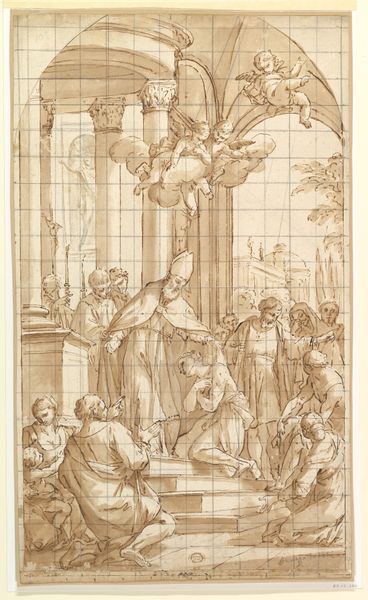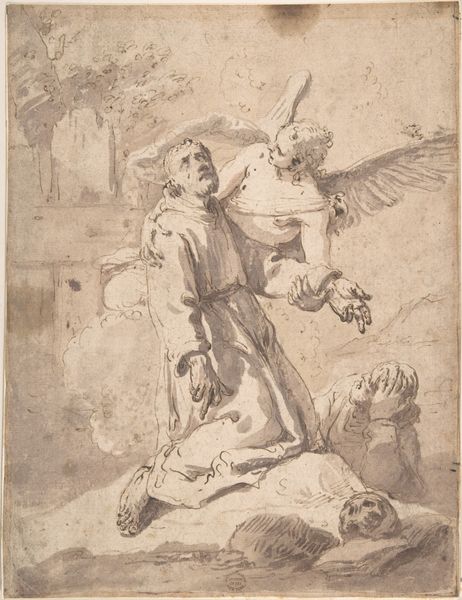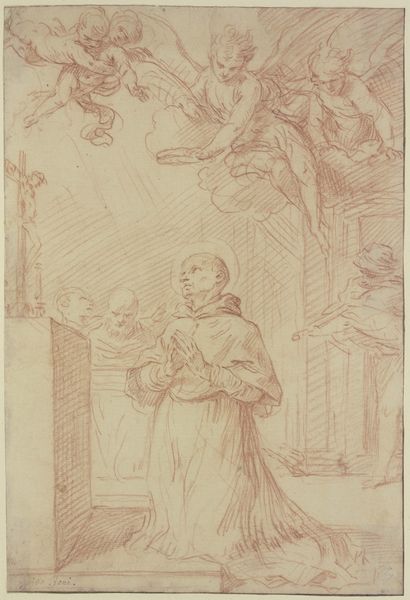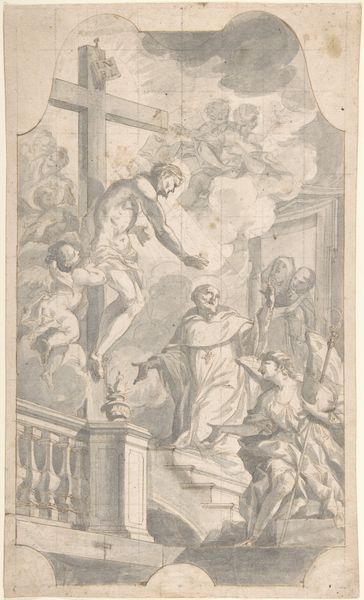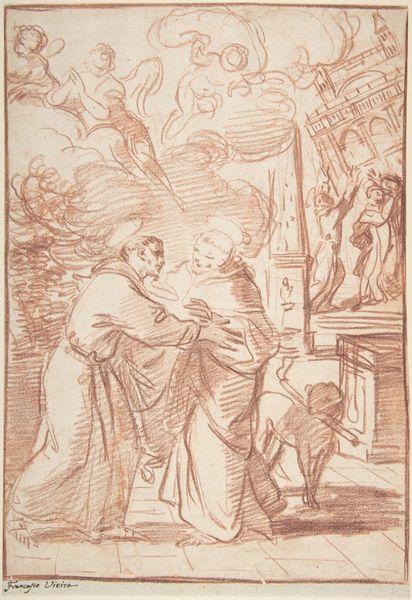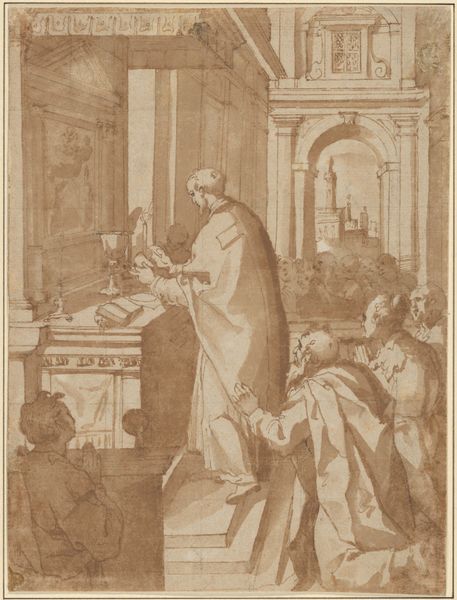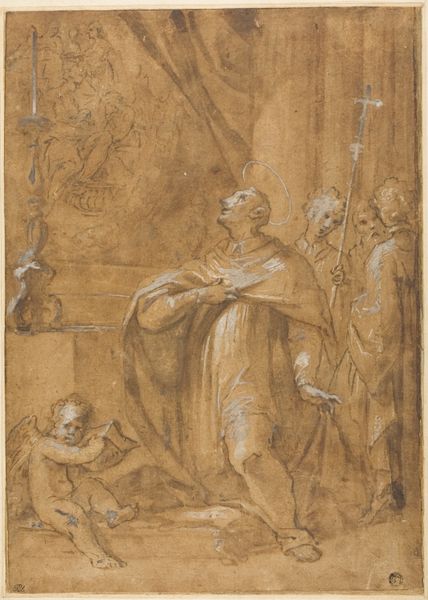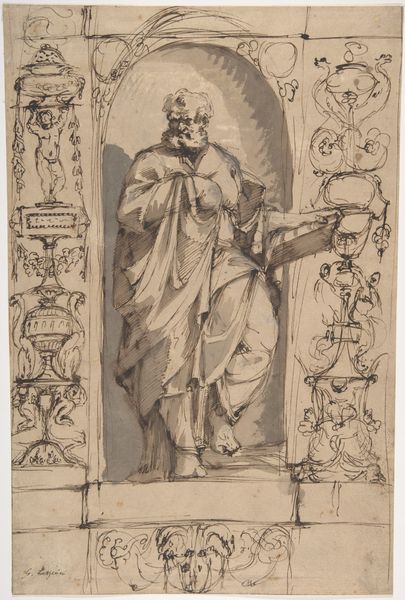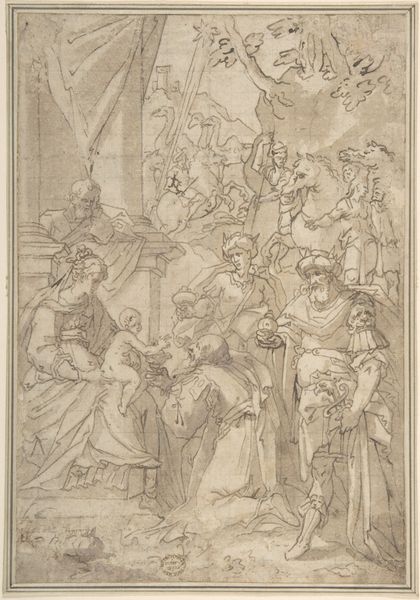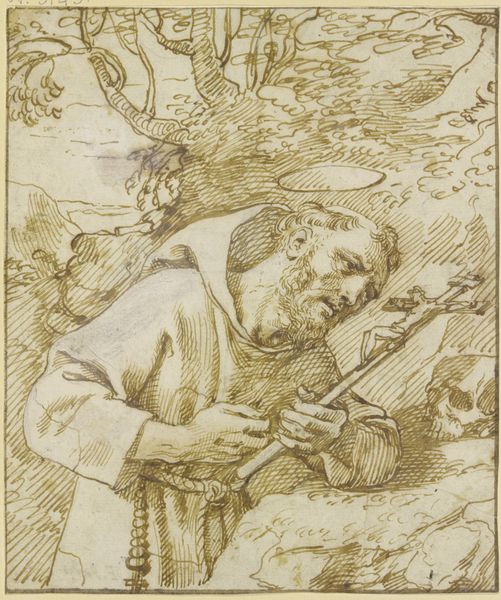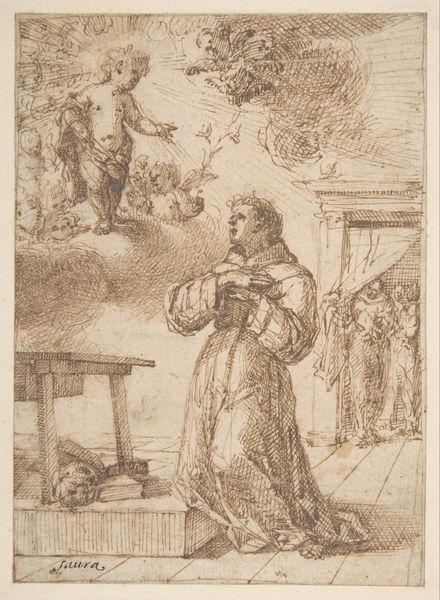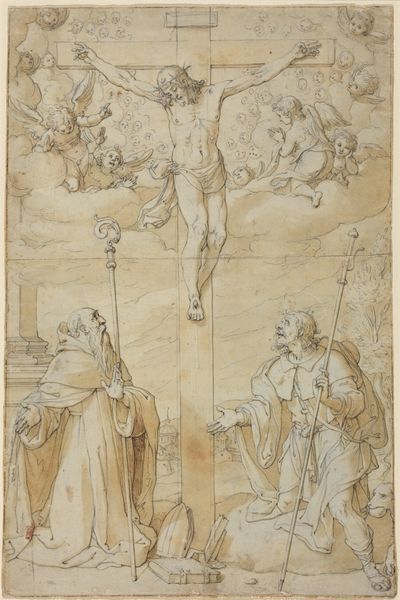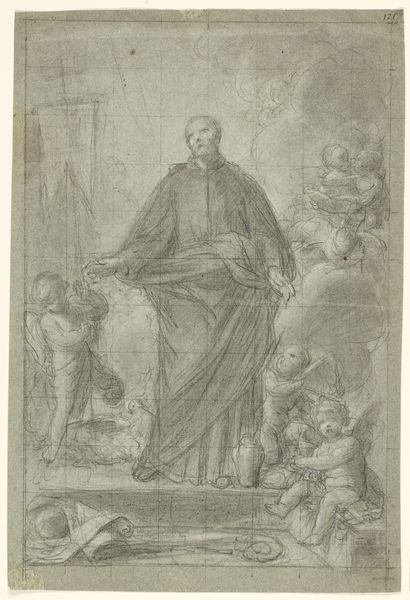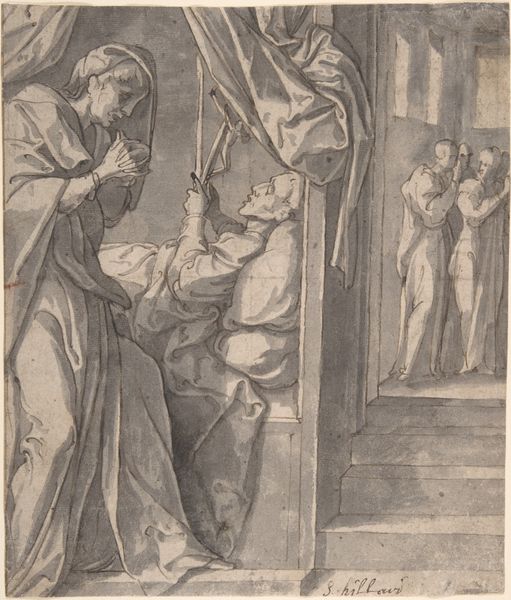
Blessed Francis Venimbeni Celebrating Mass for souls in Purgatory 1750 - 1799
0:00
0:00
Dimensions: 20-1/16 x 11-1/16 in. (50.9 x 28.1 cm)
Copyright: Public Domain
Curator: This ink and pen drawing, now hanging at the Metropolitan Museum of Art, is attributed to Giuseppe Cades and is entitled "Blessed Francis Venimbeni Celebrating Mass for Souls in Purgatory". It dates back to the latter half of the 18th century. Editor: It strikes me immediately as otherworldly. The washes of ink create a sort of hazy, purgatorial atmosphere that feels… uncertain. Look at the almost skeletal, yet soaring, angel forms behind the celebrant at mass. Curator: Cades’ skillful use of Baroque visual vocabulary links to historical conventions for representing the intangible. Figures ascending to heaven—souls being saved from purgatory, even—are conventional symbols of spiritual redemption and hope that resonate powerfully across generations and faiths. Editor: The act of celebrating Mass depicted here seems crucial. This moment where the spiritual meets the physical. The precise detail devoted to the clergyman's robes, contrasted with the flowing lines of those souls in the background…It creates a striking hierarchy of representation, doesn’t it? How the church’s materials mediate between worlds and souls is just fascinating. Curator: Absolutely. The scene itself emphasizes how blessed Venimbeni’s earthly actions affected the unseen realm. The act of his celebrating Mass is presented as actively impacting the destiny of those souls; the image ascribes spiritual agency to human labor. Editor: Indeed. But more so the materials being handled – the book, the chalice – what were these vessels like when crafted? And the paper – this seems preparatory. Was this drawing a preliminary sketch? To understand this scene, it’s important to ground it to these elements. Curator: That's perceptive. Many think this artwork captures the powerful imagery linking ritual action with salvation. And though an unverified work, the symbolic importance, given Baroque norms and its use of common iconography to present an otherworldly space, remain important. Editor: For me, focusing on those materials helps bridge the distance of history and religion. The paper, ink and their manipulation give tangible form to concepts we can neither hold or fathom. It gives this scene more context and weight to see it from this side.
Comments
No comments
Be the first to comment and join the conversation on the ultimate creative platform.
